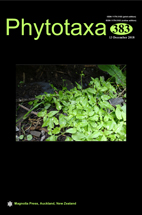Abstract
Cytospora species are common pathogens associated with stem canker diseases of woody plants, with a worldwide distribution and broad host range. The criteria of species level identification are difficult due to insufficient ex-type cultures with molecular data and phylogenetic understanding. Two fungal specimens were collected from Picea crassifolia associated with symptomatic canker and dieback disease in the Xinjiang Uygur Autonomous Region, China. They were identified as novel species based on morphology plus support from multilocus phylogenetic analyses of ITS, LSU, ACT, RPB2 and TEF1-α gene regions. Cytospora piceae is characterized by its ostiolated pycnidia with vesicularly arranged locules, and hyaline, eguttulate, aseptate, allantoid conidia, which differs from similar species in its host association and multilocus phylogeny.

